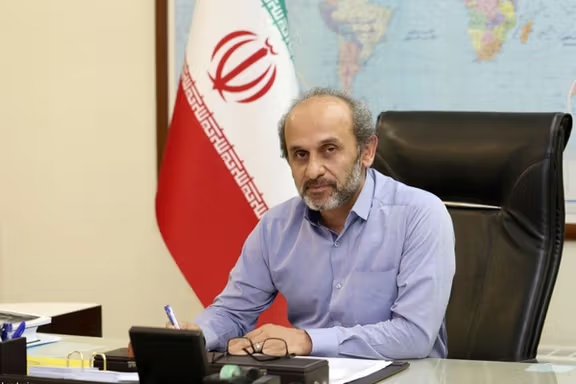Iran's State TV Budget Soars Amid Falling Popularity

The Iranian government has tripled the annual budget of Iran's State TV (IRIB) for the next year, by allocating 240 trillion rials or roughly $480 million, amid a 50-percent inflation rate.

The Iranian government has tripled the annual budget of Iran's State TV (IRIB) for the next year, by allocating 240 trillion rials or roughly $480 million, amid a 50-percent inflation rate.
The organization's budget has been always on the rise, but this is the first time the government increases it to such gigantic proportions in local currency. The increase is less significant in US dollars, due to the steady devaluation of Iran’s currency. Some Iranian media and political activists say the ultraconservative Paydari Party's influence in the Iranian parliament (Majles), in the government and its political interest in the state TV played a major part in the budget rise.
Both the state TV (IRIB) and the Revolutionary Guards (IRGC) are crucial entities in the eyes of Supreme Leader Ali Khamenei, serving to protect his regime and spread his ideology globally. However, despite their significance, these organizations have been facing challenges.
Observers inside and outside Iran note that, based on research conducted by various agencies, including the state TV's own polling agency, the IRIB's legitimacy and political impact have eroded. The state TV's popularity has declined significantly, from 57 percent to just 11 percent, as many Iranians increasingly turn to social media and foreign-based satellite television for news, entertainment, and political insights.
A chart highlighting the rise in the IRIB's budget from less than 5 trillion to 240 trillion rials between 2011 and 2024 reveals Khamenei’s support for the state TV. The most recent increase shows President Ebrahim Raisi’s support also, as IRIB downplays his lackluster record and failures by highlighting fabricated achievements.

Last September, the IRIB announced a 20 percent decline in the popularity of its TV series. Subsequently, the state TV began to call on celebrities to produce popular shows for it. However, it has acknowledged recently that the popularity of shows, which address young Iranians, are less than 5% and a show called Non-Stop, has only 2% viewership. Channel 3 that broadcasts Non-Stop was until recently the number one channel in Iran.
Meanwhile, the polling agency ISPA said in December that only 9.37 percent of Iranians follow the news on the IRIB. The figure, according to the IRIB was 51 percent in 2017. During the current year, IRGC-linked Fars and Tasnim and government-owned ISNA warned the government in several reports about the unpopularity of the state TV and the sharp decline of its viewership. Trust in IRIB news has been constantly declining during the past six years, the reports said.
The IRIB has defended the rise in its budget arguing that it is not too much in comparison to the major media outlets in the West. Social media users reminded that while most of the big TVs in Europe and the United States have around 10,000 to 20,000 staff members, the IRIB has a bulky staff of over 50,000 people.
Hardliners in Iran also defended the state TV with some calling it "the nation’s honor." They claim that IRIB is the only media outlet that defends Iranian culture and identity, although most of its programs are Shiite religious propaganda. Most Iranians characterize IRIB's output unrelated to Iran's age-old culture and unique identity and scold the state TV for being Palestine's rather than Iran's national TV.
Khabar Online wrote in a report that IRIB has not been successful in promoting the Islamic Republic's ideology either. Shadmehr Rastin, a media critic, told the website that the most IRIB can do is to preserve its current 10% viewership. However, he noted that according to hardliner politician Vahid Jalili the deputy director of the IRIB and a Paydari member, it still has a 24 percent viewership. However, Jalili was not able to quote any research to back up his claim. According to Khabar Online, IRIB insiders say that the state TV produces its programs for only 10 percent of Iran's population who support the regime and its ideology.